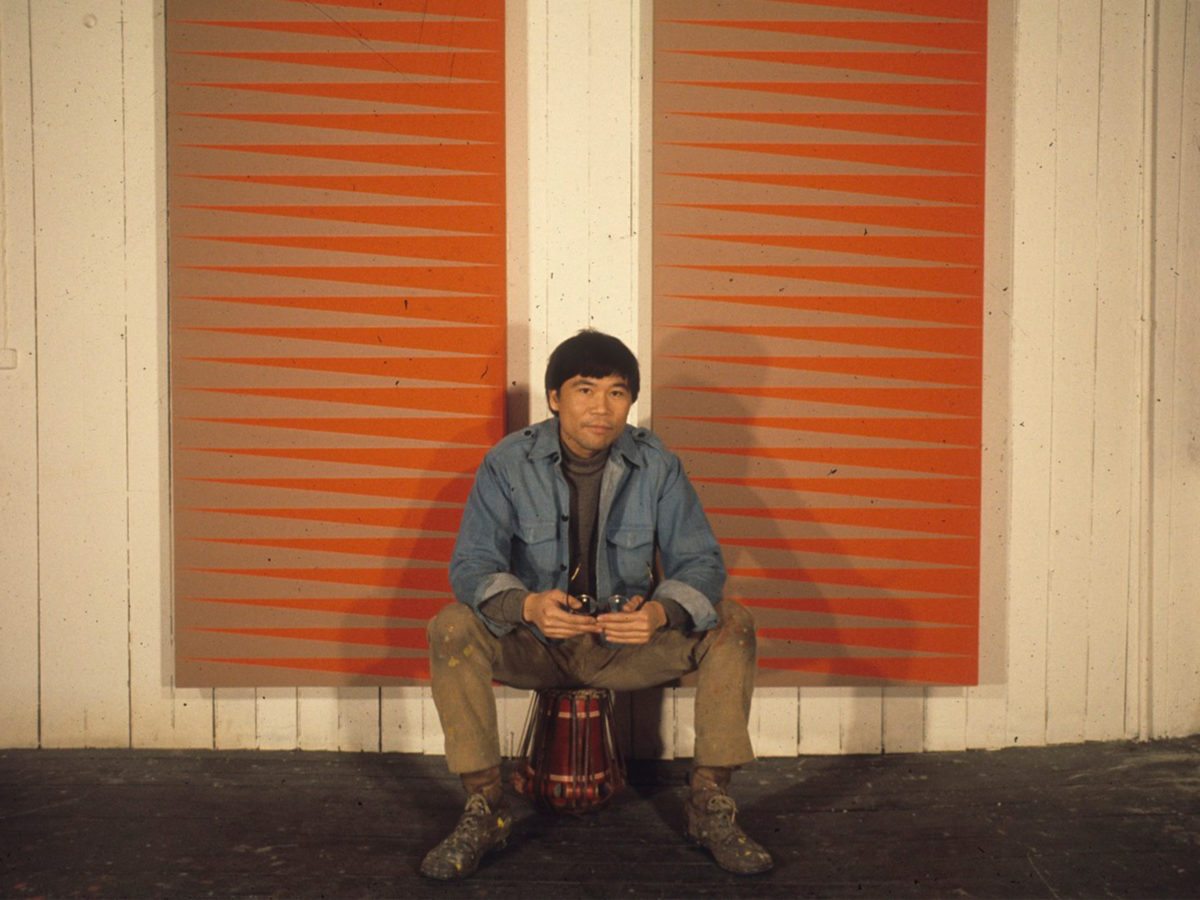Activity
“When You Look at It from an Angle”: Perceiving Leo Valledor’s Art
Objective: To understand how Leo Valledor’s visual illusions call into question our perception of reality.

Common Core State Standards Addressed
5.VA:Re7.1. Compare one’s own interpretation of a work of art with the interpretation of others.
Prof.VA:Re7.1. Hypothesize ways in which art influences perception and understanding of human experiences.
Materials
- Devices with internet access
- Printouts of worksheet “How Does This Painting Work?”
- Pens/pencils
Procedure
1. Introduce the lesson; here is a possible opening (20 min.):
While Valledor made extensive use of geometry in his paintings, he did not see his work as “geometric art.” As he asserted in an interview with David Bourdan, “[my art] uses geometric elements, but . . I don’t see it in terms of mathematics, in terms of anything but a visual thing.” Indeed, critic John Yau argues that Valledor was more interested in “how we see” and not “what we see.” Let’s look more closely at how Valledor plays with perspective in his paintings.
- Project the following quotes on the board:
“The shape [of the canvas] also does a funny thing when you look at it from an angle. A lot of the times you get the illusion of the shape coming out into the room. . . . The shaped canvas is really a sculptural idea, although I don’t come out in 3D.” (Bourdan 2012, 22)
“[Valledor] did not believe, as [Donald] Judd claimed, that the shape of the canvas determined what was inside, nor was he content to obediently reiterate painting’s flatness. He wanted to evoke what was beyond sight. . . . Valledor’s work from the 1960s deliberately establishes a tension between the two-dimensional and three-dimensional through its illusionism, while lines suggested by the contours of the directional shapes point to an unknown space — the reality beyond the painting’s borders.” (Yau 2020) - Explain that Valledor and his fellow Park Place artists in New York were intrigued by the work of inventor Buckminster Fuller, who theorized about vector geometry and the fourth dimension, time-space. Valledor himself said in an interview, (project this quote and read out loud)
“By four dimensional color, I mean the notion that it exists within time. And I have this idea about time being part of all these ambiguities that we see in dimensions, like the idea that you read a line two-dimensionally and the difference if . . . that line were coming straight toward you as a point. I feel the difference in that is time.” (Bourdan 2012, 23) - Next, project Valledor’s painting Skeedo: https://www.sfmoma.org/artwork/2015.401/
- Discuss as a group the optical illusion that Valledor creates with this 2D painting. What doesn’t make sense about this painting? What parts seem to “stick out”? How do the shapes and colors force your eyes to “travel” through this painting and see the illusion? What role does time play in your being able to see the illusion?
2. Divide the students into five groups and give each student a printout of the worksheet “How Does This Painting Work?” Allow each group to explore the virtual Valledor exhibition at the David Richard Gallery, and choose one painting to look at more closely. Students will then use the worksheet to note their observations. (25 min.)
- https://www.davidrichardgallery.com/Exhibit_Detail.cfm?ShowsID=496
- https://www.galleriesnow.net/shows/leo-valledor-dimensional-space/
3. Assign homework (5 min.): Journal write on the following question:
In a Valledor painting, “how you see” is more important than “what you see.” What do you think this means?
4. Next Day: Share Out
Have students volunteer their reflections from their journal-writes.
5. Wrap Up: What do Valledor’s paintings help us to realize about our perception of reality?
Download the teacher packet from sidebar above for complete instructions.
For more lessons based on Leo Valledor, visit the artist’s teacher packet.




